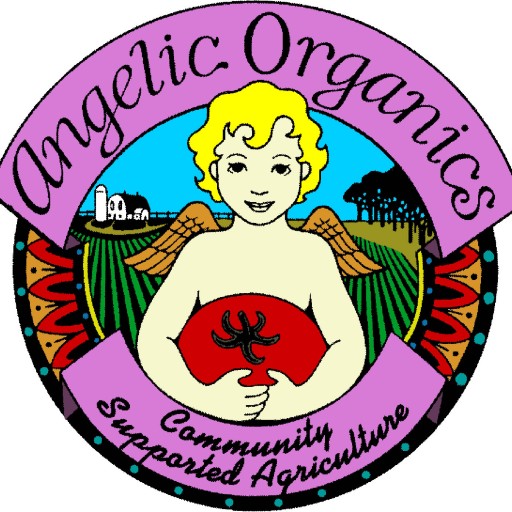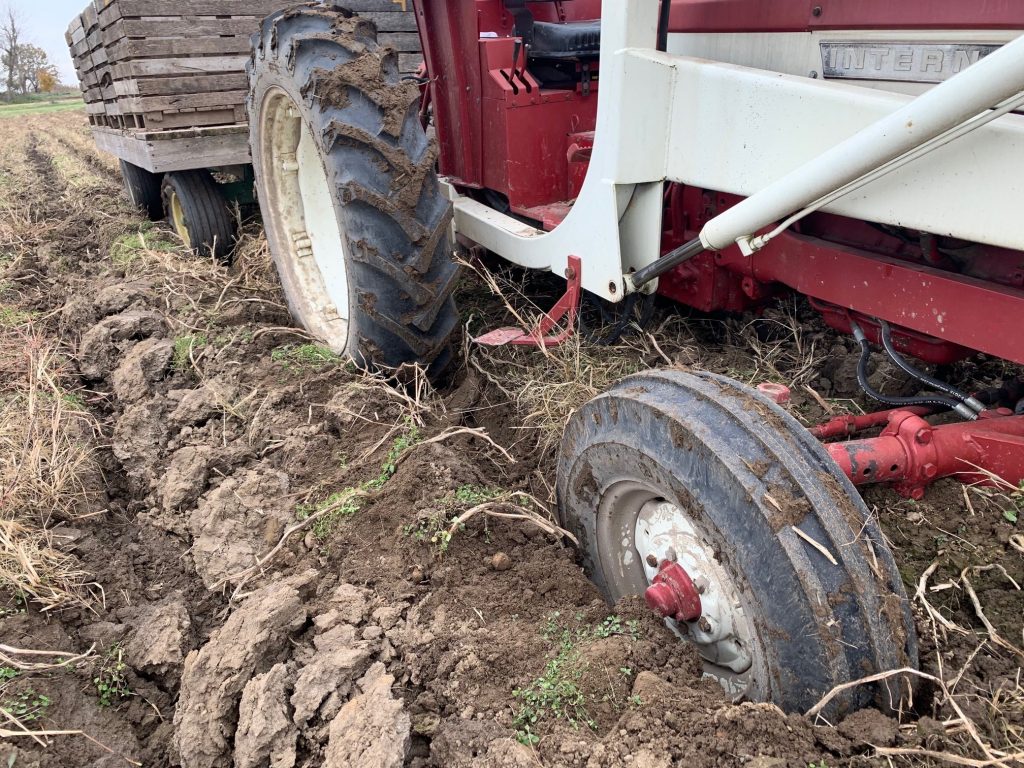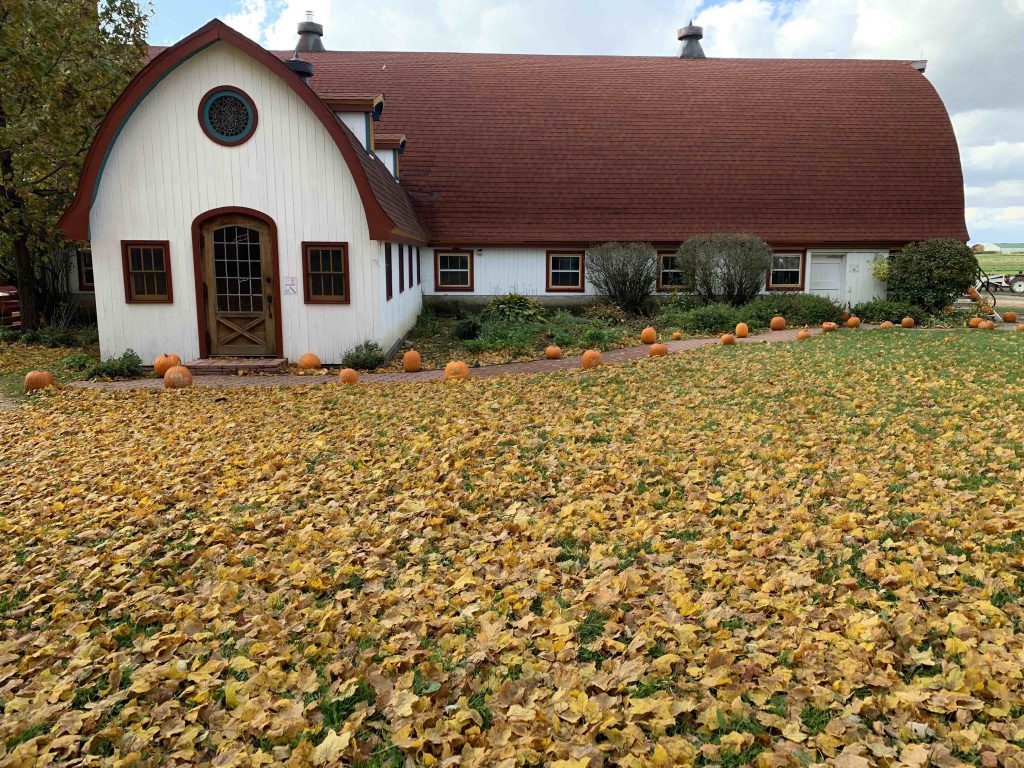Farmer John Writes: Did We Finish the Potato Harvest?
Week 17, October 29th – November 2nd, 2019
Last week in Farm News, I wrote about the challenge of getting our potatoes harvested due to the pervasive mud. As the week was coming to an end, we finally resorted to undercutting the potatoes to allow the soil to air out a bit. By Monday morning, we were encouraged by the state of the soil. It was certainly not dry, but it was less wet. Perhaps it was less wet enough to harvest.
We hustled the potato harvester and harvest wagon to the field. We were able to harvest potatoes for almost the whole length of the field. (A small part of the field was still too muddy to harvest.) Within an hour, rain started, turning the field back into mud again. We had harvested less than two bins of potatoes, and there were probably another 20 to 25 bins to harvest.
This past Saturday, after a few marginal drying days, we tried again. The crew had agreed to work a full Saturday, due to the snow and hard frost soon coming our way. The harvester lumbered through the soil, doing its best to sort out potatoes from clods of mud. This sorting process is enhanced by two crew members who sort clods and stones from the potatoes as they pass by on the conveyor.
In spite of the tough going, such as getting the wagon tractor stuck and throwing a chain, the crew extracted a few bins of potatoes from the soil. Then rain came–pounding sheets of rain. Will we get the rest of the potatoes out? I doubt it, but we absolutely will try, if we are lucky enough to get more drying weather this late in the season.
About Your Potatoes
We avoid washing potatoes, since they take a long time to dry. If they are damp when we bag them, the paper bag will weaken and burst. Also, the potatoes store better when not washed. And, we are being very careful of taking on any extra work these days, since we want to, as fast as possible, get everything out of the fields that might otherwise succumb to frost. However, some of our potatoes are so seriously caked/globbed with mud that we plan to wash them.
Fall Crop Report
I have marveled at how some of the crops this fall have flourished. I have been waiting for a final verdict for some of the other crops, as we have had fairly warm weather for October, and I thought that it might help some of the other crops to pull through. Here is an overview of our fall crops–some of these we have already given and they are done, others are still upcoming.
Excellent Quality, Excellent Yield
- Mizuna
- Arugula
- Kale
- Easter egg radishes
- Daikon radishes and Daikon greens
- Choi–fabulous
- Chinese cabbage
- Kohlrabi–best ever
- Lettuce–nicest lettuce of the season, maybe the nicest of the past many seasons
- Brussels Sprouts tops: very popular
- Carrots
- Winter Squash
- Parsley
- Sage
Excellent Quality, So-So Yield
- Turnips—greens are fabulous; turnip bulbs are underdeveloped
- Beets—not enough for everyone who wanted beets.
- Potatoes–the ones we have harvested so far are of good quality and about an average yield. We have 4 fields of potatoes. The equivalent of two fields is oozing with mud. We might get more of these muddy potatoes out of the ground, might not.
- Leeks–went in late, due to, yup, rains
- Thyme
Okay Quality, Disappointing Yield
- Broccoli–lost at least half of crop to rot, due to fall rains. That’s half of two whole fields.
- Cabbage–there are some small cabbages. Most of the cabbage did not form heads, due to the fall rains. We lost much of the cabbage field.
Complete Loss
- Brussels sprouts–the sprouts are about the size of marbles. A whole field of sprouts was lost. Fortunately, the tops have been of good quality and very popular this fall
- Celeriac–rotted due to extreme rains
- Popcorn–tiny, moldy ears
Perspective
We had 39 fields in production this year. We lost to flooding the equivalent of 3 fields of our fall brassicas and we might lose 2 fields of potatoes. That’s about 1/8 of our crops.
Additionally, there were many, many crops that I seeded, tore up due to bad germination or excessive weeds or flooding, re-seeded, and sometimes tore up again and re-seeded.
Also, some of our normally heavy hitting summer crops did quite poorly, notably the peppers and zucchini. These setbacks were probably due more to the transplants becoming root bound in their flats, because we were unable to get them into the ground in a timely way due to the wet summer. Still, we have had adequate crops for the shares so far this season, though not always as much variety as we wanted.
CSA
I suppose this is where the CSA relationship flourishes or it doesn’t. We have gone to great lengths, a huge outlay of money and time–way beyond what was budgeted–to make this year as productive as possible. We did everything we could to salvage the year. The crew was heroic. My wits, strength, and resources were tested to the maximum.
One might say, “but you lost over 1/8 of your crops. What kind of a farm is that?”
Or one might say, “how is it possible that you were able to pack boxes week after week with such weather adversity?”
Not for the Faint of Heart
This season is following two previous seasons of tremendous weather adversity–that’s three seasons in a row. As I mentioned in a former newsletter, 3 of the 6 worst flood years in the past 70 years on this farm have been these past 3 seasons. The other 3 were 1951, 1973, and 1993.
We are racing to bring many crops in before the upcoming snow and expected hard frost–mizuna, turnips, lettuce and Daikon. (Daikon greens can probably survive a hard frost, but the tops of the radishes themselves push up above the ground as they develop, making them vulnerable to a frost.)
Kale, leeks, cabbage, parsley, and Brussels sprouts tops will survive a frost down to the mid-20’s. Potatoes should be okay down to the mid-20’s.
Values
This past Saturday, I presented to the Farm Beginnings class sponsored by the Angelic Organics Learning Center. I was asked to focus on my values or mission. I covered a lot of value driven territory, such as get the crops in on time, maximize soil fertility and enhance the forces in food for the shareholders with Biodynamic practices.
I also highlighted Haidy’s and my commitment to beauty, as beauty is a way to elevate people’s experiences of their surroundings, of others, and of themselves. Beauty doesn’t happen at our farm in case there is time and money left over for it after all the other needs are met. The commitment to beauty is woven in with all the other priorities and standards for the farm.
I read this excerpt by Rudolf Steiner to the class:
Many people believe that the materialism of our modern time arises because so many materialistic writings are read. …this is only one of the lesser influences. What the eye sees is of far greater importance, for it has an influence on soul processes that more or less run their course in the unconscious. This is of eminently practical importance, and when spiritual science will one day really take hold of the soul, then will the practical effect become noticeable in public life.
I have often called attention to the fact that it was something different from what it is today when one in the Middle Ages walked through the streets. Right and left there were house façades that were built up out of what the soul felt and thought. Every key, every lock, carried the imprint of him who had made it. Try to realize how the individual craftsman felt joy in each piece, how he worked his own soul into it. In every object there was a piece of soul, and when a person moved among such things, soul forces streamed over to him.
Now compare this with a city today. … All this is alien to the inner soul processes; it is related only to the outer man. Thus, it generates those soul forces that tend towards materialism. These influences work much more strongly than do the dogmas of materialism…What the human being sees, what is poured into his environment, becomes a force in him. In accordance with it, he forms himself.”
~Rudolf Steiner, September 17, 1907, Stuttgart, Germany
I continued in my own words, “a beautiful space is successful when it helps to bring people together in an open and loving way. People are the most important part of a beautiful room.”
“And how should we encounter those who we meet in a beautiful room? By listening attentively. By remembering that it’s not about you; it’s about the other. To make it truly about the person across from you: ask ‘Who are you? What do you need? How can I help?’”
The room and the people in it will become more beautiful when these questions are earnestly asked.
Your Share
Let the farm office know anything you’d like to share about this week’s box at email hidden; JavaScript is required. Please note the week and day of delivery, your site, when you picked up your box, and any comments about your box. If your box is missing an item, let us know at email hidden; JavaScript is required and we’ll make it right.
Emails
Make sure to add both email hidden; JavaScript is required and email hidden; JavaScript is required to your email address book to make sure that you receive all pertinent emails.
Please Fold Your Boxes Properly and Return Them
The farm re-uses the vegetable boxes. Flaps are easily torn when the boxes are dismantled improperly, and then the box bottom might later burst open with fresh, organic local produce heading towards the floor. Please carefully flatten your box and return it to your delivery site. If you receive home delivery, place your flattened, empty box it in the location where your box is delivered.
Thank You
Thank you for being with us for a dramatic farming adventure this season.
Warmly,
Farmer John







Best. ever. kohlrabi! I concur!
Witness to and shareholder for 20 years in this CSA and I agree that this has been a heroic year. I marvel at what you have done with the hand of weather that was given to the farm, and hope that others understand what magic you have wrung from the soil.
We heard epic reference to the year of 1993 when we first joined. Guess the year of 2019 will go down in the books, too.
I am grateful for and appreciate what you and your team does.
Thank you so very much!
I second that, Margo. Thank you for a wonderful season of delicious food and connections to you and the land and to other shareholders.
Dear Farmer John and every single member of the Angelic crew: We are the drop site for Lakeview neighborhood in Chicago. Each week during harvest season, we see the veggie-loving shareholders arrive empty handed, and depart with smiles and produce. Subscribing has changed our diet for the better. Thank you so much for sharing the hard parts of farming as well as the successes. The nature of the CSA relationship means that we roll the dice WITH you. Great weather, no pests, wow great harvest! Stinky weather, pesky bugs, weeds triumphant then we see a little less. HAPPY HALLOWEEN to one and all at the farm and THANK YOU once more.
Farmer John, opening up our farm share is always one of the highlights of our week. We are so grateful for the amazing feats that you and the entire Angelic crew go through in order for us to share in the harveset. We also learn so much from your weekly letters, both on the challenges and complexity of farming and on life in general. I especially enjoyed your words at the end of this week’s letter regarding what makes a beautiful space successful, and will definitely be quoting you on that in the future. Thank you again for sharing your beautiful farm, harvest and soul with us!